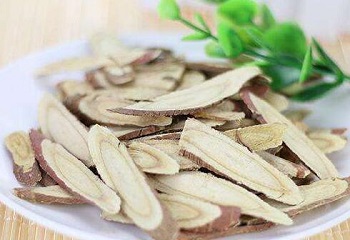Licorice is a commonly used traditional Chinese medicine and has been accepted and used by people. Its main ingredients are: glycyrrhizin, glycyrrhizic acid, glycyrrhizin, licorice flavonoids, tetrapyridin, formononetin, and quercetin. wait. It has detoxification, anti-inflammatory, antitussive, anti-tumor, anti-ulcer, antibacterial and other effects. At the same time, glycyrrhizin has an inhibitory effect on the proliferation of AIDS virus; glycyrrhetinic acid has an inhibitory effect on myeloma and ascites liver cancer. Glycyrrhizic acid has obvious anti-diuretic effects; liquiritigenin and liquiritin have anti-ulcer and antispasmodic effects; licorice flavonoids also have antioxidant and antibacterial effects.

There are three original plants of licorice recognized by the National Pharmacopoeia, namely the dried roots and rhizomes of Glycyrrhiza uralensis Fisch., Glycyrrhiza inflata Bat. and Glycyrrhiza glabra L.. Among them, licorice has the widest distribution, the largest yield and the best quality. Licorice is a traditional Chinese medicinal material in my country with a long history of application and is well-known at home and abroad. As early as the Warring States Period, there were records of using licorice to treat diseases, which dates back more than 2,500 years. “Shen Nong’s Materia Medica” of the Eastern Han Dynasty called licorice “beautiful grass” and “densely sweet”, and was listed as top grade. Traditional Chinese medicine believes that licorice is sweet and flat, and is a good medicine for nourishing the spleen and replenishing qi, relieving coughs and diseases, relieving pain and relieving pain, reconciling various medicines, and detoxifying. The US FDA lists licorice extract as a safe and non-toxic substance.
Purpose
Licorice mainly contains glycyrrhizic acid and the flavonoid glycyrrhizin (glycyrrhizin). Licorice extract is an additive with antibacterial, anti-inflammatory, detoxifying, deodorizing and other functions. Its main uses are:
(1) It is a health-care sweetener with high sweetness and low caloric value. Its sweetness is about 250 times more than that of sucrose; it can be added as a sweetener in food, beverages, and candy industries, and can also be used in yellow Or it can be used as a natural pigment in brown food and beverages.
(2)Pharmaceutical industry: used for antitussive and expectorant, gastric ulcer, acute and chronic gastritis, eczema, skin itching, hepatitis, hyperlipidemia, conjunctivitis, and for the treatment of cancer and the prevention and treatment of AIDS.
(3) Cosmetics and cigarette industry; can prevent dermatitis, dry skin, sun exposure, rash, throat moistening, etc.
(4) Licorice extract can activate corticosteroids (inhibit metabolic enzymes) and indirectly enhance the effects of corticosteroids. It can be used in ointments, creams, water, lotions, milk and honey, etc. Cosmetics, it can neutralize, remove or reduce toxic substances in cosmetics, and can also prevent allergic reactions in some cosmetics. It is more suitable for high-end hair or skin cosmetics.
(5) Licorice flavonoids have the effect of mildly inhibiting tyrosinase. Licorice extract has been proven to be the most effective plant whitening glycyrrhizic acid agent.
Side effects
The most widely reported side effect of glycyrrhizic acid use through consumption of black licorice is lowered blood potassium levels, with effects on fluid balance and neurological function.
Long-term use of black licorice, even in moderate amounts, can increase blood pressure, possibly lead to irregular heartbeats, and adverse reactions with prescription medications.
The effects on body fluids are related to the inhibition of cortisol metabolism in the kidney and subsequent stimulation of mineralocorticoid receptors, as well as reduced blood levels of renin, potassium and aldosterone, which together lead to an increase in blood pressure.

 微信扫一扫打赏
微信扫一扫打赏

